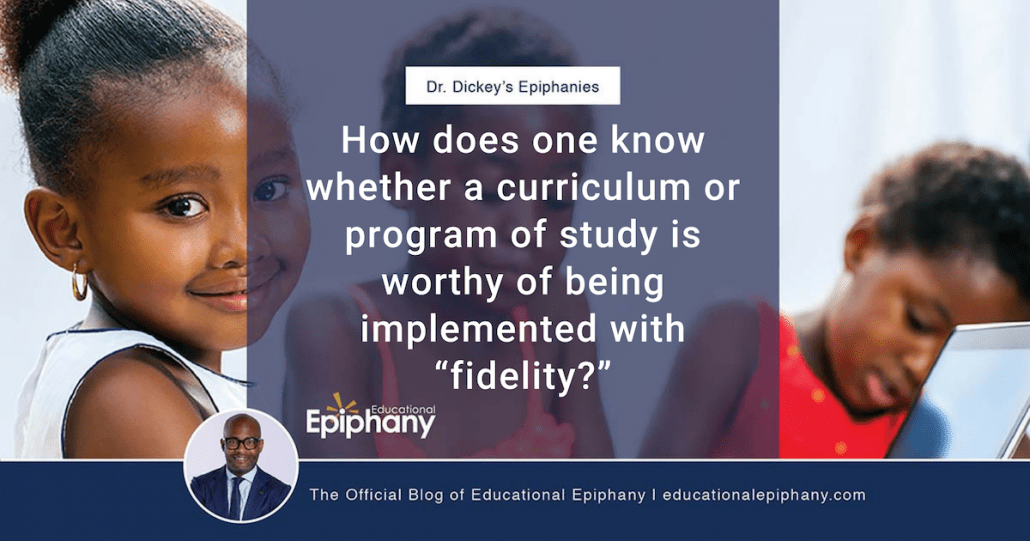We are forever and a day asking teachers and school leaders to implement curricula/programs of study with “fidelity.” But all curricula are not created equally and are not deserving of being utilized with blind fidelity.
How does one know whether a curriculum or program of study is worthy of being implemented with “fidelity?” And furthermore what is “fidelity?
Let’s have an epiphany!
One can be certain that a curriculum or program of study is worthy of being implemented with fidelity when:
(1) the structure and function of the content and of the formative assessments are aligned to a finite set of correlate student outcomes as well as the nuanced expectations of the standards that we know will be assessed;
(2) the content and structure are responsive to the developmental needs and knowledge deficits (foundational skills and grade-appropriate concepts) of the student population being served by the implementation;
(3) the content and structure are designed to develop not only student capacity, but also support the development of teachers conceptual understanding of the content and concepts;
(4) the content and structure are paired in a manner that promotes reading (over lecture); speaking opportunities for students (over teacher-directed instruction); independent, critical thinking, and problem solving; and writing for the expressed purpose of demonstrating mastery and transfer; and
(5) the content and pedagogy are supported by a longitudinal examination of its impact on student outcomes in schools/districts with populations similar to the proposed treatment population (i.e., below grade level readers, students who read and process information multiple grades below expectations).
Fidelity and pacing are not synonymous.
Teachers across America are told to implement with “fidelity,” but what they actually hear from administrators is this, “Teachers, you should be on or near the same page as your same grade-level, same content-area peers…You need to cover every standard in the curriculum prior to the close of the marking period, semester, or school year.”
There are several issues with this interpretation of “fidelity.”
(1) In many cases, it’s almost impossible to consistently be on or near the same page in the curriculum as ones’ same grade-level, same content peer. Why? Pacing is constantly impacted by at least two factors: (a) individual teachers’ content knowledge (which can expedite or slow student acquisition of new knowledge and ability); and (b) the rate at which individual students and groups of students acquire new knowledge and skills — both of which are often unable to be anticipated before teachers deliver initial instruction.
(2) Coverage of the curriculum should never be the bar for the standard of service. Rather, the standard of service or what I like to call “instructional due care” is not about getting to the end of the curriculum guide by the close of a given marking period. Have you ever seen someone speed up to a red light at an intersection? You are not thinking genius are you? It doesn’t make sense to hurry up and teach, so that you can hurry up and assess, only to find out that students needed more time with the teacher teaching;
(3) I must lift this important caveat. I do not intend to blow a dog whistle here for those who are content with teaching one objective or one standard for 5 weeks. Such behavior is tantamount to instructional malpractice. There ought to be some sense of urgency relative to pacing. There has to be a middle ground when it comes to fidelity and pacing.
America, I know that we can work together to find a compromise and free our effective teachers from the pressure associated with “fidelity” of implementation and the faulty coverage-driven approach to pacing.
Let’s talk.

